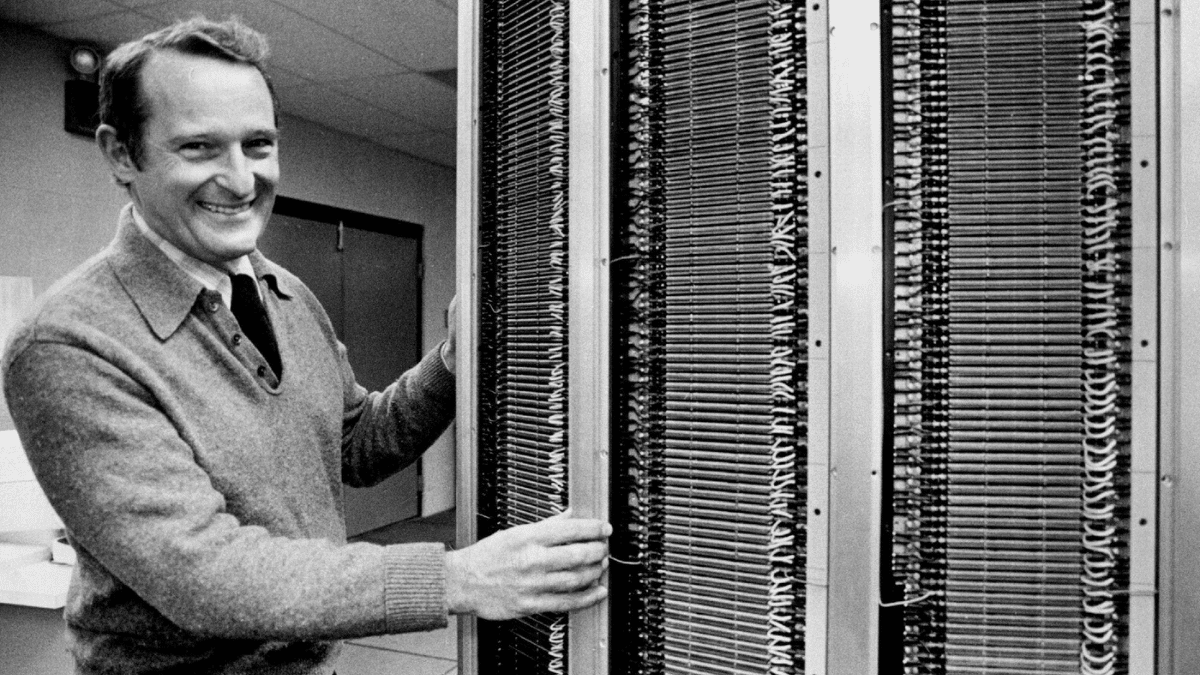Father of supercomputers: Who is Seymour Cray?
Seymour Cray is an American electrical engineer. Also known as the "father of supercomputers", Cray was a key figure in creating the supercomputer industry. So who is Seymour Cray, the father of supercomputers?

Seymour Cray was born on September 28, 1925 in the United States. The fact that his father was a civil engineer increased Cray's interest in science and engineering. He started to work from a young age. That's why the basement of their house has been turned into a "laboratory" for Cray.
Seymour Roger Cray (September 28, 1925 – October 5, 1996) was an American electrical engineer and supercomputer architect who designed a series of computers that were the fastest in the world for decades and founded Cray Research which built many of these machines. Called "the father of supercomputing", Cray has been credited with creating the supercomputer industry.
Cray graduated from Chippewa Falls High School in 1943 and graduated from the University of Minnesota in 1950. After graduating from the field of electrical engineering, he started his business life.
Seymour Cray single-handedly created the high-performance computing industry and single-handedly led it for years. Although Cray is called a dedicated computer engineer; He described himself as “an overpaid plumber.”
Having founded many companies, Cray first started his career at ERA (Engineering Research Associate). ERA was a digital computer company. Here Cray worked on the first commercially successful scientific computer, the ERA 1103.
Later, Cray was recognized as a digital computer technologist for his work in ERA 1103.
In 1957, ERA was taken over by other companies. Later, Cray left. In 1957, Cray and William Norris founded Control Data Corporation.
Control Data Corporation (CDC)
Founded by Cray and Norris, CDC would later become a major computer manufacturer.
In 1960 the CDC 1604 was produced, replacing the vacuum tubes in a low-cost ERA 1103 with smaller transistors. The CDC 1604 was one of the first computers in this field. He also helped create the CDC 1604, and the later CDC 6600.
While the CDC 1604 was still being shipped to users, Cray had begun to design the other computer. While working on an enhanced version, Cray knew he didn't like working with ordinary machines. What he wanted was to build the world's fastest computer.
For this reason, he started work on CDC 6600 himself by delegating the work of the improved version of CDC 1604 to others.
CDC 6600
In 1964 the CDC 6600 was released, giving rise to the term supercomputer. The CDC 6600 was capable of performing three million floating point operations per second (FLOPS). Later, the CDC 7600 was released.
In 1972, Cray acquired Control Data Corp. left from. He founded his own firm, Cray Research Inc., which aims to produce the fastest computers in the world.
Cray Research
In 1976, Cray Research's first product, Cray-1, was launched. Cray-1 made the entire computer fast, not just the processor. Capable of performing 240 million calculations per second, the Cray-1 was used for complex physics operations and scientific applications. Cray-1 was taken to the laboratories of the government and universities. In total, more than 80 Cray-1s were sold.
Cray-1 was a huge success. Seymour Cray also earned the nickname "The Wizard of Chippewa Falls." After Cray-1, fast supercomputers were produced. Some had trouble selling.
In 1981, Cray resigned as chairman of the board of Cray Research. He continued his work in his laboratory in Chippewa Falls.
After Cray-1, Cray Research worked on the Cray X-MP, Cray-2, and Cray-3. But the Cray-3 was not released. Instead, the Cray Y-MP was launched.
The Cray X-MP was one of the first machines to use the multiprocessor. The Cray-2 was capable of 1.2 billion calculations per second, while the Cray Y-MP was capable of 2.67 billion calculations per second.
Cray later founded Cray Computer Corporation. Cray took the Cray-3 with him. Cray-3 didn't sell much after its release. Cray, on the other hand, was trying to start the design of the Cray-4. In the post-Cold War era, demand for supercomputers had fallen and microprocessor technology had advanced.
The company hadn't been able to generate much revenue from the Cray-3 either, and it had run out of money. So in 1995, Cray Computer Corporation filed for bankruptcy.
After the bankruptcy of Cray Computer Corporation, Cray did not wait long and founded SRC Computers. Cray focused on communication and memory performance here. When Cray passed away as a result of a traffic accident while he was still at the beginning of the design he started, the design could not be completed.
Seymour Cray died on October 5, 1966, at the age of 71, in Colorado, from injuries sustained in a car accident two weeks earlier.
